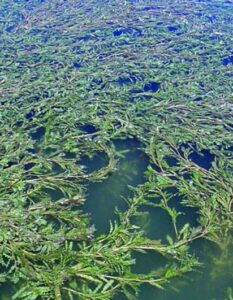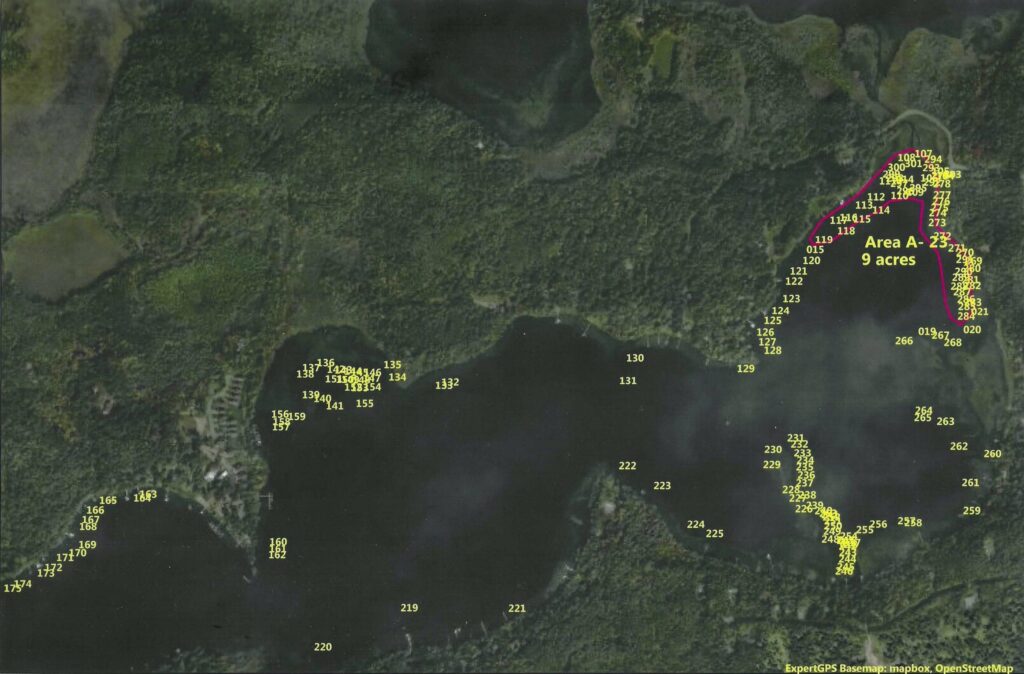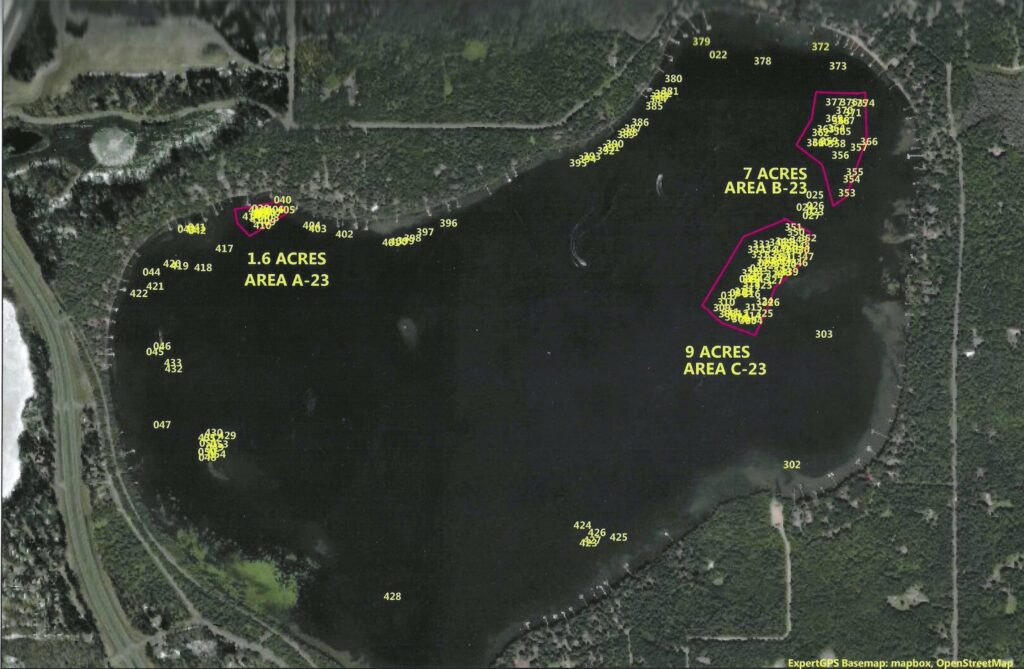Curly Leaf Pondweed
Curly leaf pondweed is a problem in the Cullens and has been for many years.
Yet there is good news: lake association leadership and members are committed to addressing it.
Thanks to the generous donations of members, the Cullen Lakes Association is able to pay for and coordinate annual treatments that limit the prevalence of this recreation-inhibiting plant.
Donations are important because they pay for the majority of treatment costs. The CLA seeks curly leaf pondweed treatment grants from the Minnesota DNR every year. However, grant funds have become less available and sometimes are non-existent. As a result, donations are more important than ever.
Treating curly leaf pondweed is by far the lake association’s largest annual expense.

2023 Pondweed Location Maps
Curly Leaf Pondweed FAQs
This spring the lakes again had a very late ice out -- April 29 for Upper Cullen and May 1 for Middle and Lower Cullen -- followed by unusually warm days throughout May which caused a rapid increase in lake water temperature. The daily high temp was in the 60s six days, the 70s 14 days, and the 80s 7 days! Low temperatures rarely dropped below the 40s and 50s. Also, the ice was covered with a lot of snow for most of the winter, blocking the sunlight and thus inhibiting the CLP’s normal growth throughout the winter, growth which usually gives it a head start over native aquatic vegetation in the spring. The result? When our CLP treatment contractor did their spring survey, they found the CLP to be stunted and sparse and the water temperature was already close to 60 degrees. They provided their suggested treatment polygons to the DNR, but by the time the CLP was grown enough to treat, the native vegetation’s growth was also well underway and the DNR would not allow the CLP to be treated. We were able to hire a local company, Central Minnesota Aquatics, to conduct a survey in early July of the CLP in each lake before it started to die back. Thus we have professionally gathered information on areas of CLP which should be treated next year, if ice out and the
weather cooperate.
Curly-leaf pondweed is a rooted submersed aquatic plant. It varies in color from olive-green to reddish-brown. It can be identified by its wavy lasagna noodle-like leaves that are approximately a half-inch wide and two to three inches long. Leaves have an obvious mid-vein, “toothed” or serrated edges and blunt tips.

- It can overtake native aquatic plant habitat, outcompeting native plants.
- It can form dense mats at the water’s surface, interfering with water recreation activities.
- It provides unsuitable shelter, food, and nesting habitat for native fish and animals.
- It readily invades areas of disturbed lake bottom.
- Its mid-summer die-off contributes to late summer and fall algae blooms.
CLA has been treating areas of curly leaf pondweed treated since 2009. However, treatment was not allowed by the DNR in 2018 because of the lack of its growth and the abundance of active native plants within the proposed treatment areas at the time the treatment had to be done. Also, in 2019 proposed treatment areas in Middle Cullen were not allowed to be treated and areas treated in Upper and Lower Cullen were greatly reduced in acreage for the same reason.
The DNR only allows a certain percentage of a lake’s area to be treated each year. Also, chemical treatment of curly leaf pondweed is only effective in larger areas of the plants. In small areas the chemical used is not able to stay in contact with the plants long enough to be effective.



